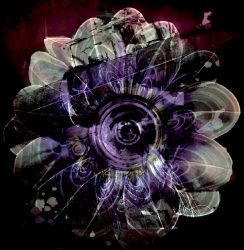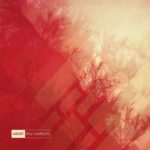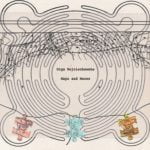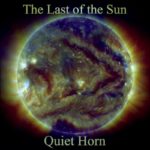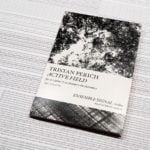 TRISTAN PERICH – ACTIVE FIELD
TRISTAN PERICH – ACTIVE FIELD
Active Field is the fourth and final title in Tristan Perich‘s ‘Composition’ series: compositions for acoustic instrumentation with 1-bit electronics.
Parallels (tuned triangles and hi-hats), Telescope (bass clarinets and baritone saxophones), Dual Synthesis (harpsichord) were released earlier this year.
Active Field is a 25 minute composition (originally from 2007), written for 10 violins and 10-channel 1-bit electronics, the strings performed by Ensemble Signal with Brad Lubman conducting.
The nervous, high speed (especially on Parallels and Dual Synthesis), high pitched sound of the 1-bit electronics may be somewhat of an acquired taste, requiring full attention to be enjoyed.
Active Field may possibly be the most accessible from this series.
It opens with the string section, its composition style somewhat related to early Philip Glass. After the string sections first 10 minutes there the 10-channels 1-bit sounds takes over with a happy-go-lucky repetitive theme. There are more of these spectacular transitions, back and forth, until (around 20 minutes) the theme is deconstructed into long string chords building up into the final theme and closing drone.
All releases in this series, packed including the full musical scores printed in poster form, are available from Physical Editions. But if a digital download is good enough for you, check Perich‘s Bandcamp Page for (low-priced) download versions.
EDU COMELLES – AGOST
Edu Comelles is perhaps best known for his collaboration with cellist Sarah Galán as Cello + Laptop, but his work – and over 20 releases – covers a broad range of (experimental) styles.
Agost is a collection of seven pieces performed by different instrumentalists – Sara Galán (cello), Lucy Claire (piano), Avelino Saavedra (drums) and Fernando Junquera (guitar). Each artist playing the instrument in dialogue with the embedding sound created from “one single, one minute sound recording containing the sounds of rubbing the edge of a coup of wine with his fingertips.”
Seven tracks of beautiful, abstract acoustic, often improvised soundscapes, linked together with the sound of rubbing a glass of wine…
The closing track of this album, Happy Birthday, may sound familiar to some of you: it was also Comelles’ submission for the Ambientblog Anniversary Collection (with a different title).
OLGA WOJCHIECHOWSKA – MAPS & MAZES
Polish composer and violinist Olga Wojchiechowska releases her debut album on the Time Released Sound label, showcasing work originally written for various theater, dance and film productions.
Listening to the music on this album, I wondered about the fact that I had never heard any other music from her before! There are a lot of soundtrack productions in ambient music, and even more in modern classical music – but Olga‘s work has a different – more personal – sound compared to many others.
You won’t hear any melancholic post-romantic string arrangements here. The (modern-classical) electronically treated compositions are “somewhat dark and moody at times with it’s elegiac violin and haunting horns…yet always elegant and absorbing…”
As usual for TRS, there are two physical releases: a standard digipak release (edition of 150) and a special edition release (edition of 65). When both run out the digital editions will remain available.

QUIET HORN – THE LAST OF THE SUN
Compared to electronics and string instruments, horns are rarely used in creating ambient music.
Quiet Horn demonstrates that the trombone is a great instrument to use in a live looping setup. And a quite inspiring one: his Bandcamp page presents no less that seven releases in 2015 alone!
The Last of the Sun is a relatively random pick from this batch, but it can serve as a good example for hist work.
You can hear he’s an experienced player: Seattle-based Jeff Bernhardt has been playing trombone for about 25 years. He’s ‘part wanna-be jazz trombonist; part Frank Zappa disciple and creator of songs with ridiculous lyrics; part improvisational ambient trombonist.’
The opening track from The Last of the Sun is somewhat reminiscent of Basinski’s use of looping, but other tracks explore different roads. Most tracks center around the sound of the trombone itself, but some focus on the trombone-generated synth effects but leave out the original sound. (For a sound even more detached from its source you might also like to try “Last Leaves”
“I’m constantly revising my looping setup and coming up with new kinds of sounds to generate from the initial trombone sound source. Eventually, though, I’ll probably run out of ideas and avenues to explore.”
But even if that happens, the result of this exploration leaves a lot of great music for us to explore!


